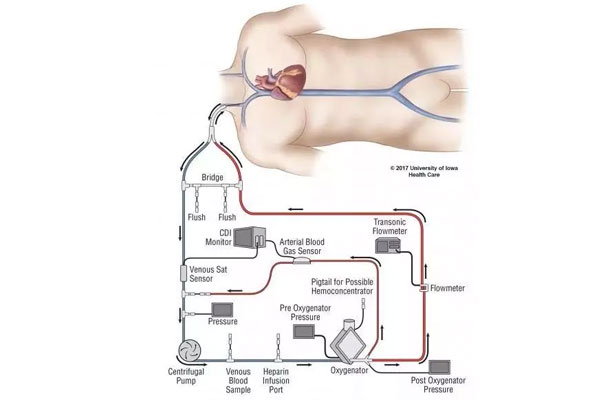Some good news is coming from Wuhan's anti-epidemic recently.
Good news came from Zhongnan Hospital of Wuhan University on January 22. The hospital successfully treated a patient with severe novel coronavirus pneumonia through the establishment of ECMO (Extracorporeal Membrane Oxygenation System) treatment, the first case in the province.
The Extracorporeal Membrane Oxygenation System (ECMO), also known as artificial heart and lung, can replace the human body's respiratory function and is the last line of defense for patients with new coronavirus pneumonia.
The Shanghai Customs in China cleared 81 sets of ECMO at full speed and sent them to Wuhan Jinyintan Hospital as quickly as possible.
Severely ill patients are in the ICU, and the treatment time is longer, and generally requires ventilator or upper extracorporeal membrane lung (ECMO) treatment. Even if the condition of severely ill patients is stable, they must be transferred to the general ward to continue treatment. At present, there are deaths of severely ill patients every day in Wuhan, and it is reported that there is no case of severely ill patients being discharged from the hospital.
Severely ill patients are generally older, basically over 50 or 60 years old, and there are more than 80 years old. They have some basic diseases such as cardiovascular and cerebrovascular diseases and diabetes. This group of people may suffer from severe acute respiratory failure even if they have common pneumonia. In our daily work, the fatality rate of pneumonia in elderly people over 65 is 70% to 80%. In addition, Wuhan's new pneumonia is more serious than normal pneumonia, and treatment is more difficult.
The autumn and winter seasons were originally a period of high incidence of respiratory infectious diseases. A pandemic, avian flu, and viral pneumonia may all cause acute respiratory distress syndrome (ARDS), with a fatality rate of more than 50%, and a higher incidence of elderly people. In comparison, the treatment of critically ill patients is more difficult than SARS.
With the maturity of ECMO technology and the increase in applications, the monitoring of patients in ECMO is a particularly important link.
The success of ECMO depends not only on technical factors, such as circuit design, physician experience, etc., but another important aspect is the various monitoring systems that clinicians can judge and evaluate critically ill patients. Several literature reports that NIRS responds to local tissue hypoxia faster than finger pulse oxygen, which reflects systemic oxygen supply, and its changing trend is of important clinical significance. Therefore, the combined application of NIRS with ECMO and other monitoring methods will effectively protect patients from multiple directions and provide early warning of hypoxia in the clinic.











